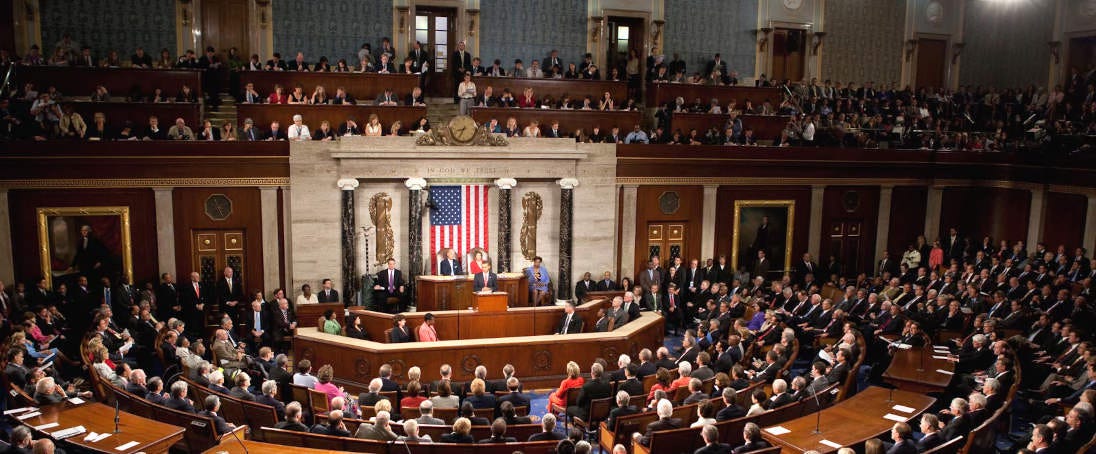Does a fair redistricting system exist?
With American politicians now openly calling for deliberately gerrymandered redistricting, can we find a way back to Constitutionality?
With apologies to Betteridge,1 the answer is a resounding YES.
Gerrymandering,2 for my non-American followers, is the creative drawing of Congressional district lines in such a way as to make the minority party gain a majority of Congressional seats. The ruling minority draws a few boundaries in such a way to include almost entirely majority party members, then draws the rest of the districts to be 49% majority and 51% minority. Presto, the minority party wins the most districts in a state.
Gerrymandering violates representative democracy; the “one person, one vote” principle established by the Supreme Court; the Fourteenth Amendment; the Voting Rights Act of 1965; many states’ Constitutions; the Equal Protection clause; and probably a lot of other stuff. But moreover, every human being who believes in representative democracy can see at a glance that it exists only to undermine representative democracy.
So, what are the alternatives? Can we change the way Congressional seats are allocated? And if we did, how would we decide how to reallocate them?
Luckily, we are not the first to ask this question, and many have answered it. They have come from the fields of economics, mathematics, and political scientists. Here are just five of the top proposals — and there are many, many more floating around out there — that would restore redistricting back toward the American way:
Independent Redistricting Commissions (IRCs)3
Independent or citizen commissions are by far the most widely implemented reform in the U.S., used in states like California, Michigan, and Arizona. Multiple surveys from the Brennan Center and Pew Research show bipartisan public support exceeding 60 % for removing politicians from the process. Scholarly consensus views IRCs as the most practical and constitutionally stable reform, since they maintain human judgment while reducing partisan manipulation. Harvard’s Center for Effective Government and Loyola Law’s All About Redistricting4 project both mark independent commissions as the “cornerstone” of real-world reform.
Algorithm‑Assisted Redistricting (Ensemble‑Based Evaluation)5
Algorithmic redistricting frameworks, pioneered by Princeton’s Gerrymandering Project and Harvard’s ALARM team, are increasingly used to evaluate fairness rather than draw maps automatically. These models generate thousands of potential district plans meeting legal criteria and statistically assess whether enacted maps are partisan outliers. Courts in North Carolina and Pennsylvania have already cited ensemble analyses in rulings on fair representation. Within academia, this ensemble‑based approach has strong peer recognition and institutional adoption, led by researchers like Moon Duchin and Kosuke Imai.
Efficiency Gap and Related Fairness Metrics6
The efficiency gap, created by Nicholas Stephanopoulos and Eric McGhee, is the most influential quantitative measure for legal evaluation of partisan bias. It quantifies “wasted votes” and provides a clear threshold for when partisan advantage becomes excessive. Although the U.S. Supreme Court declined to make it a federal standard, several state courts — including those in Wisconsin and North Carolina — have adopted or referenced it in challenges. Among political scientists, it remains the benchmark for empirical fairness testing.
The Fair Representation Act (Proportional Multi‑Member Districts)7
The Fair Representation Act (reintroduced in 2025 as H.R. 4632) would replace single‑member House districts with multi‑member districts elected by ranked choice voting. Backed by FairVote, Protect Democracy, and reform coalitions, it has significant academic support from political scientists advocating proportional representation as a systemic fix that obviates gerrymandering entirely. While requiring congressional approval, it is widely cited as the most equitable long‑term model among electoral reform experts.
Ensemble + Commission Hybrid (“Human‑in‑the‑Loop” Redistricting)8
A newer model gaining traction since 2023 combines independent commissions with algorithmic evaluators. The commission crafts initial maps, then uses ensemble simulations to benchmark fairness before final release. Both the University of Chicago’s Center for Effective Government and Brennan Center researchers classify this integrated model as the most promising sustainable reform route — balancing democratic oversight with statistical rigor. This framework has been field‑tested in California, Michigan, and Colorado with successful public transparency outcomes.
My own idea, which is not at all peer-reviewed or tested, is to simply dump districts altogether. Each member of the U.S. House of Representatives represents about 780,000 Americans. To determine how many representatives each state should have, you simply divide the state’s total population by that number. Once the number of seats per state is known, those seats could be allocated to political parties based on how many registered voters in that state belong to each party. On election day, voters would choose among their party’s candidates, and the candidates with the most votes would fill the number of seats assigned to their party. But I’m neither a mathematician nor an economist, so this probably unworkable for some reason I’m not aware of.
Anyway, the bottom line is that gerrymandering is bullshit, and we want the United States of America to be a bullshit-free zone.
https://en.wikipedia.org/wiki/Betteridge%27s_law_of_headlines
https://en.wikipedia.org/wiki/Gerrymandering
https://www.brennancenter.org/issues/gerrymandering-fair-representation/redistricting
https://redistricting.lls.edu
https://gerrymander.princeton.edu/redistricting-report-card/
https://www.brennancenter.org/sites/default/files/legal-work/How_the_Efficiency_Gap_Standard_Works.pdf
https://beyer.house.gov/news/documentsingle.aspx?DocumentID=8604
https://scholarship.law.duke.edu/cgi/viewcontent.cgi?article=1205&context=djclpp



A problem with #4 is that voters want someone to call who has a stake in representing voters in their individual district (e.g. accountability). States already have two senators.
I grew up in Aspen during the 70s-80s. The influential parents of my time there ranged from John Denver to Hunter S. Thompson. Trying to find ways to inspire influencers of today by some of the originals…before the computer.
So, I have created this series of articles. I am calling it…”Voices of the past talking about the present, trying to inspire a better future” … be it Positive or Gonzo. The deal is, I will stop writing when Trump stops giving me things to write about. Now it’s up to him. We all know how Hunter felt about Nixon…double that sentiment for Trump.
https://open.substack.com/pub/growingupaspen/p/when-gerrymandering-cant-save-you?r=2g93c&utm_campaign=post&utm_medium=web&showWelcomeOnShare=false